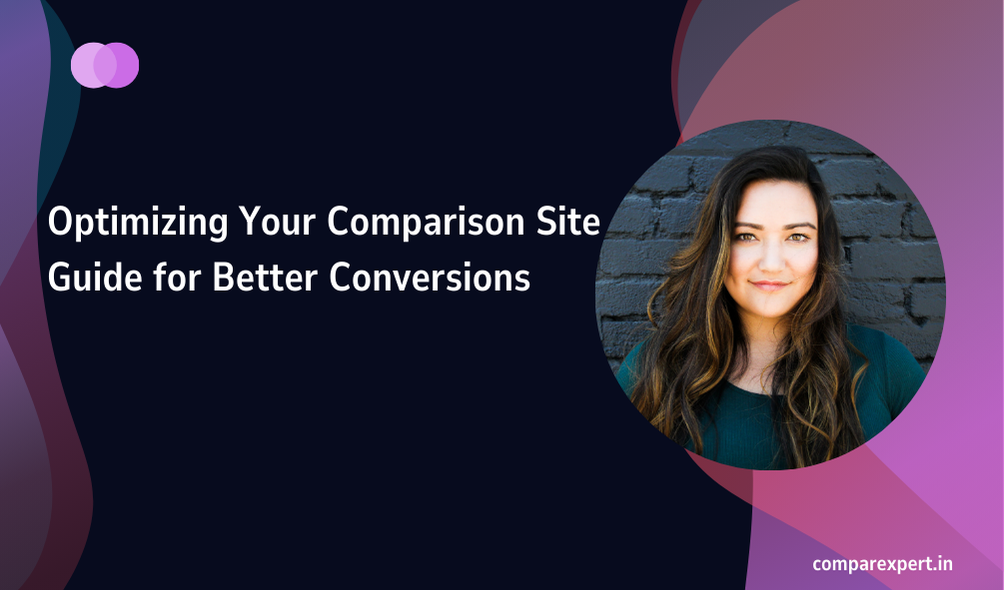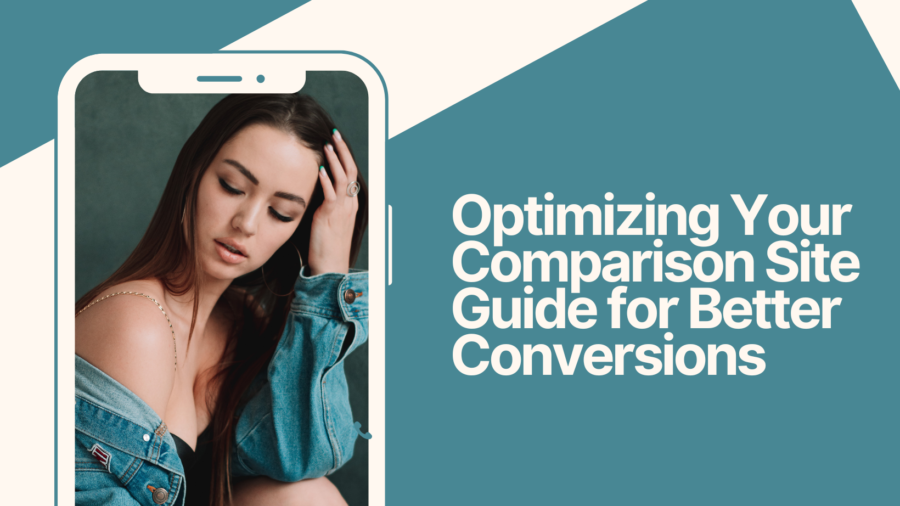
Discover actionable strategies to optimize your comparison site for better conversions. This comprehensive guide covers user-centric design, Comparison site guide persuasive content creation, SEO best practices, social proof integration, and performance enhancements. Learn how to attract your target audience, boost engagement, and drive higher conversions with expert tips and proven techniques. Perfect for website owners and digital marketers looking to maximize the effectiveness of their comparison platforms. A well-optimized comparison site is an effective tool for increasing conversions and revenue. By focusing on user experience, content quality, and technological performance, you may convert casual visitors into repeat buyers. Let’s go over the methods for converting your comparison site into a high-converting platform.
Table of Contents
Understanding the Basics of Comparison Sites
What Is a Comparison Website?
A comparison site is an online platform that allows customers to compare items and services side by side. From flight offers to software solutions, these websites make Comparison site guide decision-making easier by delivering important information in one location. The goal is to present comparisons that are relevant, accurate, and transparent.
The significance of optimizing for conversions.
A well-optimized site guarantees users can quickly locate what they’re searching for, making them more likely to complete Make a purchase. A confusing layout or useless material can turn consumers away, reducing your revenue. Focusing on design, content, and functionality allows you to create a seamless user experience that drives action.
Identifying Your Target Audience
Who are your guests?
Understanding your target audience is the first step towards optimization. Are your site’s users bargain hunters, professionals, or casual browsers? Analyzing demographics like age, gender, region, and interests can help you personalize your content and products to their tastes.
Analyzing Visitor Behavior and Needs.
Use technologies like Google Analytics or Hotjar to monitor user behavior. Determine which pages they visit most frequently, where they leave off, and what devices they utilize. This data can help you focus your optimization efforts on meeting user expectations.
Crafting a User-Centric Design
The Importance of Intuitive Navigation
Users can easily find the information they need thanks to a clutter-free, straightforward navigation system. Organize products or services by category, include a search tool, and provide criteria for Streamline their journey.
Comparison site guide
Prioritizing mobile responsiveness.
With mobile devices accounting for a substantial amount of web traffic, Comparison site guide a mobile-friendly design is vital. Use adaptable layouts that adjust to various screen widths and include touch-friendly components for ease of use.
Leveraging Visuals and Branding
High-quality images and consistent branding promote trust and trustworthiness. Make your site visually appealing and professional by include product photos, symbols, and clear typography.
Optimizing Content for Conversion
Writing Persuasive Product Descriptions

Your product descriptions should go beyond listing features and focus on benefits. Explain how the product addresses an issue or enhances the user’s life in simple, compelling terms.
Comparison site guide
Using compelling calls to action (CTAs)
Strong CTAs direct consumers to the next step, whether it’s “Compare Now,” “Get the Best Deal,” or “Learn More.” Use action-oriented language and clearly display CTAs Comparison site guide throughout the website.
Creating comparison tables for clarity.
Comparison tables show products or services side by side and highlight their distinguishing aspects. Use clear headings, iconography, and color-coded highlights to design them.
Implementing SEO Best Practices.
Choosing and Using High-Intent Keywords
Identify terms that correspond to user intent, such as “best [product/service]” or “compare [product A vs. product B].” Integrate these keywords naturally into your article to increase visibility.
Optimizing Meta Tags and Descriptions
Your meta titles and descriptions should contain primary keywords and a clear value proposition. This not only boosts SEO results, but also encourages consumers to visit your website.
Building Quality Backlinks
Collaborate with credible websites and blogs to build backlinks. High-quality links increase your site’s authority and search engine rankings.
Comparison site guide
Implementing SEO Best Practices.
Choosing and Using High-Intent Keywords
Identify terms that correspond to user intent, such as “best [product/service]” or “v compare [product A vs. product B].” Integrate these keywords naturally into your article to increase visibility.
Optimizing Meta Tags and Descriptions
Your meta titles and descriptions should contain primary keywords and a clear value proposition. This not only boosts SEO results, but also encourages consumers to visit your website.
Building Quality Backlinks
Collaborate with credible websites and blogs to build backlinks. High-quality links increase your site’s authority and search engine rankings.
Enhancing Site Speed and Performance
Why Speed Matters for Conversion
Slow-loading websites annoy users and raise bounce rates. Studies demonstrate that even a one-second delay can significantly affect conversions. Fast-loading websites provide a seamless browsing experience, keeping consumers engaged and more likely to act.
Comparison site guide
Tools for measuring and optimizing speed.
To analyze the performance of your website, use tools such as Google PageSpeed Insights, Comparison site guide GTmetrix, or Pingdom. Optimize by compressing pictures, enabling browser caching, and utilizing a content delivery network. Also, keep superfluous plugins and scripts to a minimum as they can slow down your site.
Using Data Analytics to Track User Behavior Analytics tools offer significant insights into how users engage with your website. Platforms like Google Analytics allow you to track parameters such as time spent page, CTRs, and conversion routes. Understanding user behavior is critical for optimizing your strategy.
Using A/B Testing for Improvement
A/B testing entails producing two versions of a webpage to see which performs better. Test headlines, CTAs, colors, and layouts to see what works best with your target audience. Even simple changes can significantly increase conversion rates.
Integrating Social Proof:
The Importance of Reviews and Testimonials
Social proof increases trust and trustworthiness. Display user evaluations and testimonials prominently on your website to reassure visitors about the quality of your products and services. For maximum effect, incorporate actual names, images, or even video testimonies.

Showcase Awards and Recognitions
Highlighting medals, certifications, or endorsements from reputable organizations can help to build your website’s legitimacy. Badges or seals of approval placed alongside CTAs can be especially useful in promoting action.
Building Trust via Transparency
Clear disclosure of affiliate partnerships.
Long-term success relies heavily on honesty. To maintain openness, all affiliate partnerships Comparison site guide and sponsored content should be clearly disclosed. This fosters trust with your audience and increases your credibility.
Providing honest and unbiased reviews.
Your comparison website should focus the user’s needs. Present accurate and unbiased Reviews that address both the advantages and disadvantages of each product or service. Users admire honesty, which makes them more likely to trust and return to your website.
Monitoring and Iterating.
Content is often updated.
Update your website’s material on a frequent basis to keep it fresh. Consistent updates, such as introducing new items, correcting obsolete material, or optimizing for new keywords, assist to maintain relevancy and ranks.
Staying Ahead of Trends and Competition
Keep an eye on industry trends and competitors’ strategies. Use tools like SEMrush or Comparison site guide Ahrefs to track competitors and identify areas for improvement in your offerings or SEO strategy.
Read More:
The Role of a Comparison Site Guide in Your Digital Marketing Funnel
Creating a Comparison Site Guide That Boosts Your SEO and Traffic
A Comprehensive Comparison Site Guide for Digital Marketers
How to Create a Successful Comparison Site Guide for Your Business
5 Key Features Every Comparison Site Reviews Blog Should Have
Conclusion
Optimizing a comparison website for higher conversions is a multifaceted procedure. By knowing your audience, improving user experience, and implementing data-driven initiatives, you may develop a platform. that not only entices visitors but also motivates them to act. Remember, it’s all about the user: make their experience easy, informative, and interesting.
Frequently Asked Questions
Q. What is the key to increasing conversions on a comparison site?
A. The key lies in providing a seamless user experience through intuitive design, persuasive Comparison site guide content, and optimized site performance.
Q. How important is mobile optimization for comparison sites?
A. Extremely important! With most users browsing on mobile devices, a responsive design ensures accessibility and enhances user satisfaction.
Q. What tools are best for A/B testing?
A. Tools like Optimizely, VWO, and Google Optimize are excellent for running A/B tests and identifying elements that improve conversions.
Q. Can social proof really improve conversion rates?
A. Yes, showcasing reviews, testimonials, and awards significantly boosts trust and Comparison site guide persuades users to act.
Q. How often should I update my comparison site?
A. Aim to update content regularly—at least monthly for minor tweaks and biannually for major updates—to stay relevant and competitive.



Add a Comment